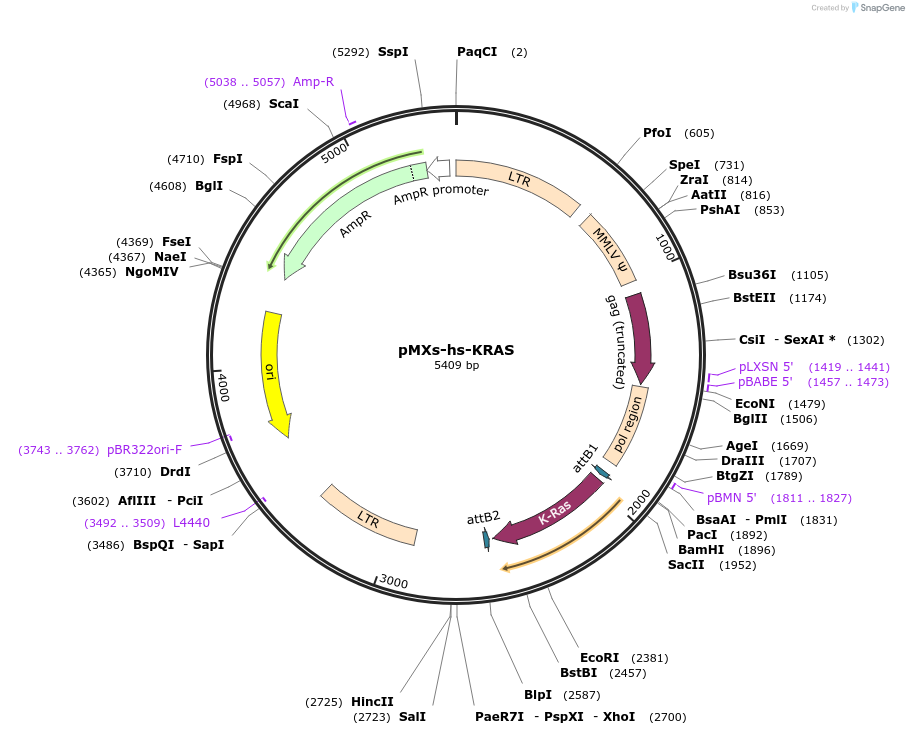-
Purposeretroviral expression of human KRAS
-
Depositing Lab
-
Sequence Information
Ordering
| Item | Catalog # | Description | Quantity | Price (USD) | |
|---|---|---|---|---|---|
| Plasmid | 52729 | Standard format: Plasmid sent in bacteria as agar stab | 1 | $89 | |
Backbone
-
Vector backbonepMXs
-
Vector typeMammalian Expression, Retroviral
Growth in Bacteria
-
Bacterial Resistance(s)Ampicillin, 100 μg/mL
-
Growth Temperature37°C
-
Growth Strain(s)Top10
-
Copy numberHigh Copy
Gene/Insert
-
Gene/Insert nameKRAS
-
Alt nameKirsten rat sarcoma viral oncogene homolog
-
SpeciesH. sapiens (human)
-
Entrez GeneKRAS (a.k.a. 'C-K-RAS, C-K-RAS, CFC2, K-RAS2A, K-RAS2B, K-RAS4A, K-RAS4B, K-Ras, K-Ras 2, KI-RAS, KRAS1, KRAS2, NS, NS3, OES, RALD, RASK2, c-Ki-ras, c-Ki-ras2)
Resource Information
-
A portion of this plasmid was derived from a plasmid made bypMXs is from Dr. Toshio Kitamura of the University of Tokyo, the Institute of Medical Science. If you use this plasmid in a paper, please cite: Retrovirus-mediated gene transfer and expression cloning: powerful tools in functional genomics. Exp Hematol. 2003 Nov;31(11):1007-14. Kitamura T, Koshino Y, Shibata F, Oki T, Nakajima H, Nosaka T, Kumagai H.
-
Article Citing this Plasmid
Terms and Licenses
-
Academic/Nonprofit Terms
-
Industry Terms
- Not Available to Industry
Trademarks:
- Zeocin® is an InvivoGen trademark.
These plasmids were created by your colleagues. Please acknowledge the Principal Investigator, cite the article in which the plasmids were described, and include Addgene in the Materials and Methods of your future publications.
-
For your Materials & Methods section:
pMXs-hs-KRAS was a gift from Shinya Yamanaka (Addgene plasmid # 52729 ; http://n2t.net/addgene:52729 ; RRID:Addgene_52729) -
For your References section:
The let-7/LIN-41 pathway regulates reprogramming to human induced pluripotent stem cells by controlling expression of prodifferentiation genes. Worringer KA, Rand TA, Hayashi Y, Sami S, Takahashi K, Tanabe K, Narita M, Srivastava D, Yamanaka S. Cell Stem Cell. 2014 Jan 2;14(1):40-52. doi: 10.1016/j.stem.2013.11.001. Epub 2013 Nov 14. 10.1016/j.stem.2013.11.001 PubMed 24239284



